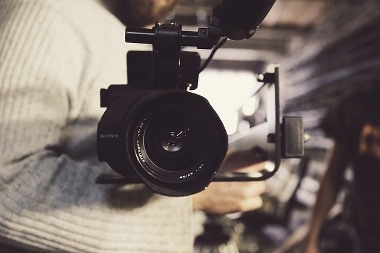Can we help you?
Contact us

Can we help you?
Contact us

Thank you for contacting us
Your form has been submitted successfully Our team will contact you again as soon as possible.
Whooppss...!! An error has occurred
Try sending later or write an email directly to areaempresas@ua.es

 PATENTED TECHNOLOGY
PATENTED TECHNOLOGY
INFO
SHEET
DOWNLOAD
EXECUTIVE
ABSTRACT
CONTACT DETAILS: Research Results Transfer Office-OTRI
University of Alicante
Tel.: +34 96 590 99 59
Email: areaempresas@ua.es
http://innoua.ua.es
A research group of the University of Alicante has developed a low-cost technique to measure the frequency of small-amplitude vibration movements.
The method is based on high-speed video acquisition and can be easily implemented with a low-end video camera. It allows simultaneously analysing different regions in one scene and even obtaining a vibration map of the whole scene. Furthermore, it is not limited to a single-point measurements allowing simultaneous analysis of complex object with different moving parts.
The technique is easy to implement and avoids using contact probes, wired systems or laser beams pointing to an object.

The method is based on searching differences between successive frames and quantifying them. Frames are thresholded at multiple levels and that binary information is tracked at a small region of interest where light intensity variation due to object vibration is expected to happen.
Any movement of the object, even the smallest one, will change the scene brightness distribution and, consequently, the borders in each thresholded level of the digital image. Detection of the changed pixels provides information of movement at a sub-pixel scale. The different signals obtained for each level are composed in order to obtain a single result from the measurement.
The use of low cost cameras produces low-quality images often affected by noise. Nevertheless, the composition of the thresholded images makes the method very robust since the main vibration peak is strongly enhanced while random noise is cancelled out.
Figure 1
Each object is represented in a frame by a succession of illuminated pixels as Fig 2 (a). When an object is moving or vibrating, we can see a change between one frame to the next in the sequence. This change is characterized by pixels that are lighting.
In Fig.2 we can see the same object in a sequence consisting of two consecutive images and a displacement of 0.25 px.
Figure 2
Fig 2 (b) represents the pixelated image as would be captured by the camera. In Fig 2 (c) the same original scene shown after a displacement of 0.25 px. Note that this small displacement is perfectly noticeable by changes in the contour of the scene. These changes are indicative of the movement.
Furthermore, the accuracy to detect this movement is much less than pixel (sub-pixel accuracy because to detect a change between images is not necessary that the movement of the point represents a complete pixel.
From changes in the binarized image, if the object vibrates a pixel shift will occur with a defined pattern, so that certain pixels turn on and off at regular intervals. Performing a processing of these data can determine the vibration pattern and frequency of it.
Using a software developed by researchers, these calculations can be performed automatically. Inserting video sequence in this software can calculate the frequency of vibration of the objects filmed. This software is easily implemented on any platform and could be adapted to the required application.
MAIN ADVANTAGES OF THE TECHNOLOGY
• Non-contact vibration measuring technique
• No need of using external elements like targets, wired devices, physical probes or optical beams
• Simple and economic setup composed of a low-end camera, and a standard computer.
• Fast and robust.
• Can measure macroscopic and microscopic vibrating objects.
• Simultaneous vibration measurement of different regions and different vibration modes (vibration map)
INNOVATIVE ASPECTS
Among the current methods for measuring vibrations, accelerometers are traditionally preferred. Nevertheless, these methods are contact devices, which may be difficult to use when the specimens not accessible due to the object itself or the surrounding conditions (inaccessibility, damage risk, etc.).
Alternatively to the accelerometers, Doppler vibrometers are often used as non-contact devices. Although they provide very accurate result, they result expensive and non-cost effective for many applications.
Additionally, both of them only provide a single point measurement while our method permits, not only monitoring the process but, with the vibration map, obtaining the vibration frequencies of all vibrating objects in the scene at a glance.
The technique has been successfully demonstrated measuring different objects (tuning fork, loudspeaker, pedestrian bridge and tension bars) and comparing results to design parameters and alternative measurements with typical devices.
Our experiments have been done with commercial compact pocket cameras costing less than 300 €, capable of acquiring 1000 fps low-resolution videos with AVI-JPEG compression.
The method can be applied to any field where non-invasive vibration movement and vibration measurements are needed. In particular we suggest acoustics, building, biotechnology, entertainment devices, maintenance, security and surveillance.
We have successfully tested the method in structural engineering and we are actually developing the software for high frequency eye movement detection, which is of fundamental importance in neurology.
The research group is looking for companies acquiring this invention for commercial agreement, technical assistance, manufacturing agreement, technical cooperation or a combination of some of these services.
This technology is protected by patent:
• Application number: 201300498
• Application date: 23/05/2013.
Biology
Molecular Biology and Biotechnology
Construction and Architecture
Pollution and Environmental Impact
Geological and Geophysical Studies
Pharmacology, Cosmetics and Ophthalmology
Computer Science, Language and Communication
Engineering, Robotics and Automation
Materials and Nanotechnology
Medicine and Health
Water Resources
Chemical Technology
Transport and Automotive
Carretera San Vicente del Raspeig s/n - 03690 San Vicente del Raspeig - Alicante
Tel.: (+34) 965 90 9959





